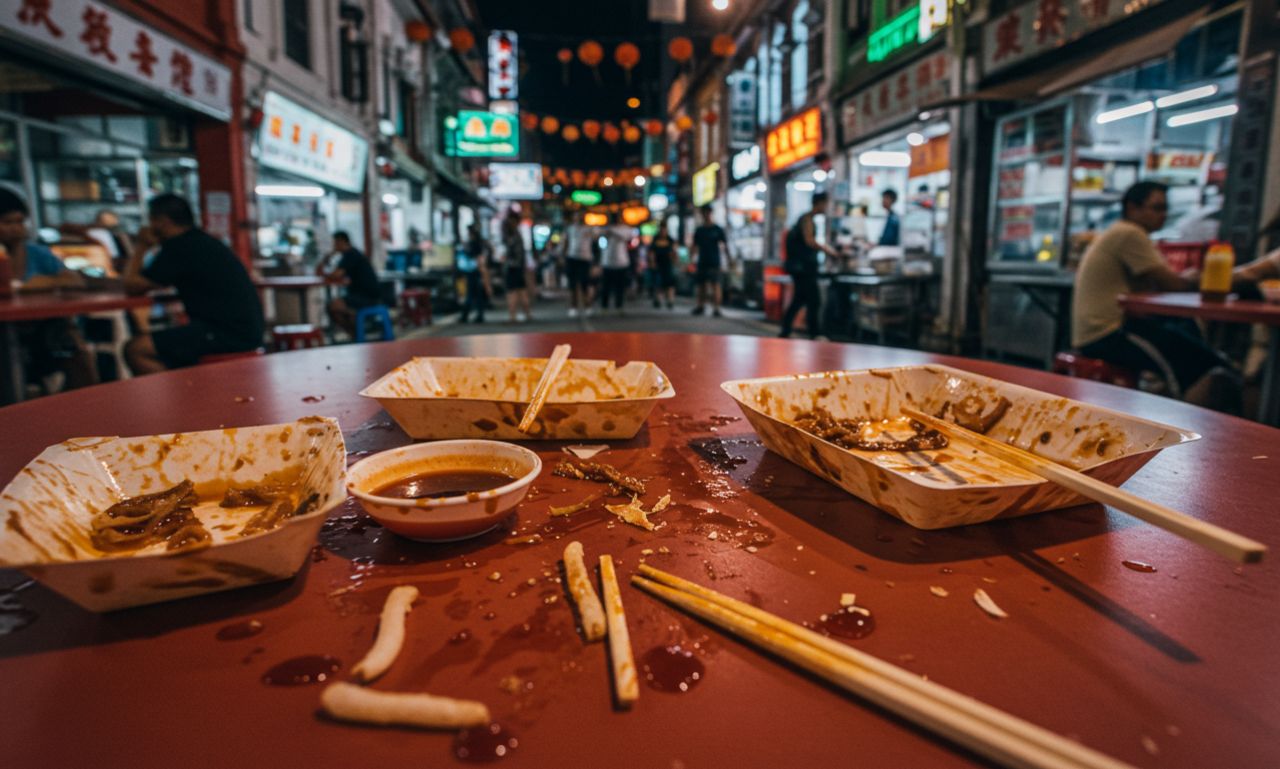Food
Chinatown Hawker Leftovers Consumption: A Closer Look at Complex Issue

In bustling food hubs like Singapore’s Chinatown, hawker centres are famous for their affordable and delicious local dishes. These open-air complexes serve thousands daily, offering everything from Hainanese chicken rice to laksa. However, beneath the culinary charm lies a lesser-discussed topic: Chinatown hawker leftovers consumption—a practice that reveals underlying socio-economic challenges and sparks debate around food waste and public health.
This article explores the different dimensions of this issue, from why it happens to what it tells us about urban life, inequality, and sustainability.
What Is Chinatown Hawker Leftovers Consumption?
A Hidden Practice in Plain Sight
“Chinatown hawker leftovers consumption” refers to individuals collecting or consuming uneaten food left on trays and tables at hawker centres, often after other diners have left. While this practice is relatively rare and not widely discussed in mainstream conversations, it still occurs—and when it does, it raises questions about poverty, dignity, and survival in one of the world’s most prosperous cities.
In some cases, it involves elderly individuals or those who appear homeless, quietly approaching vacated tables to consume leftover rice, vegetables, or meats. Others may rummage through food court bins for edible scraps, especially near closing hours.
Why Does It Happen?
Economic Disparity in a Developed Nation
Singapore is often portrayed as an economic powerhouse with one of the highest GDPs per capita. Yet, income inequality remains a real issue. Not everyone benefits equally from the country’s wealth, and a small segment of the population struggles to meet daily needs.
For some, especially the elderly living alone on minimal state support or low-income workers, hawker leftovers consumption may be a last resort to avoid hunger.
Rising Cost of Living
The cost of basic necessities, including food, has risen over the years. For those on tight budgets or without steady income, even a $3 meal at a hawker centre may be unaffordable. This economic pressure can drive some individuals to seek alternatives—no matter how undignified or unhygienic.
Social Perception and Public Reactions
A Mix of Sympathy and Stigma
The public’s reaction to hawker leftovers consumption is often divided. Some observers feel a strong sense of compassion, seeing the practice as a reflection of the struggles of vulnerable groups in society. Others may react with discomfort or disapproval, citing hygiene concerns and potential health risks.
Unfortunately, those who resort to this practice may face social judgment or even be asked to leave the premises, adding shame to an already desperate act.
Community Initiatives and Support
In response to the visibility of such practices, several non-profit groups and volunteers have stepped up their outreach in Chinatown and similar areas. Free meal programs, food banks, and “pay-it-forward” hawker stall initiatives have been introduced to provide more dignified support for those in need.
These efforts aim not just to feed the hungry, but to restore dignity and reduce the need for people to consume leftovers.
Health and Hygiene Concerns
Risks of Eating Leftovers
From a public health perspective, consuming food left behind by strangers poses risks. The food may have been exposed to bacteria, viruses, or cross-contamination. Especially in hot and humid climates, leftover food spoils quickly, increasing the risk of foodborne illness.
Despite this, the desperation behind such consumption often overrides the concern for safety. It’s a stark reminder that hunger can push people to take risks most would find unthinkable.
The Larger Issue: Food Waste vs. Food Insecurity
Massive Food Waste
Ironically, while some individuals resort to Chinatown hawker leftovers consumption, a significant amount of perfectly edible food is discarded daily in Singapore. Hawker stalls, restaurants, and households contribute to tonnes of food waste every year—enough to feed many in need.
This contradiction brings up an important question: How can society better manage food distribution to reduce waste and address hunger simultaneously?
Food Redistribution Solutions
There are successful models in other countries that redistribute surplus food to those in need. Apps and community programs that connect hawker stalls with food banks or soup kitchens can help bridge the gap. If implemented properly, such programs could reduce the practice of leftovers consumption by offering safer and more respectful alternatives.
Cultural and Ethical Reflections
A Mirror of Social Priorities
The existence of Chinatown hawker leftovers consumption forces society to confront uncomfortable truths about how we treat the most vulnerable. It challenges the notion of prosperity and raises ethical questions: In a city full of abundance, why are some still hungry? And what can be done to change this?
Respecting Dignity While Addressing Needs
Any solution must balance the urgency of feeding the hungry with the need to preserve human dignity. Encouraging compassion, supporting sustainable food practices, and expanding access to assistance programs are essential steps in addressing both the symptoms and the root causes.
Conclusion
Chinatown hawker leftovers consumption is more than a shocking or saddening image—it’s a symptom of deeper social, economic, and ethical issues. It reveals the complexities of urban life in a rapidly developing society where abundance and inequality coexist.
Rather than ignoring or shaming the practice, it’s vital for communities, governments, and individuals to engage in meaningful action. By improving food distribution, supporting vulnerable groups, and reducing waste, we can work toward a more equitable and compassionate society—where no one has to rely on someone else’s scraps to survive.

-

 Entertainment1 year ago
Entertainment1 year agoYoungTube 101: Tapping the Youthful Side of Online Video
-

 Pet2 years ago
Pet2 years agoDog Training Tips: Throw me a bone, will you?
-

 Entertainment2 years ago
Entertainment2 years ago4 Reasons Why She Doesn’t Call You Back
-

 Fitness1 year ago
Fitness1 year agoThe Allure of Sports T-Shirts: A Blend of Style and Team Spirit:
-

 Fitness2 years ago
Fitness2 years agoTotal Mind and Body Fitness Blog Carnival 165
-

 Fitness2 years ago
Fitness2 years agoTotal Mind and Body Fitness Blog Carnival 141
-

 Health2 years ago
Health2 years agoWhat Is Healthy?
-

 Pet1 year ago
Pet1 year agoPet Supplies Plus: A Complete Guide to Pet Health